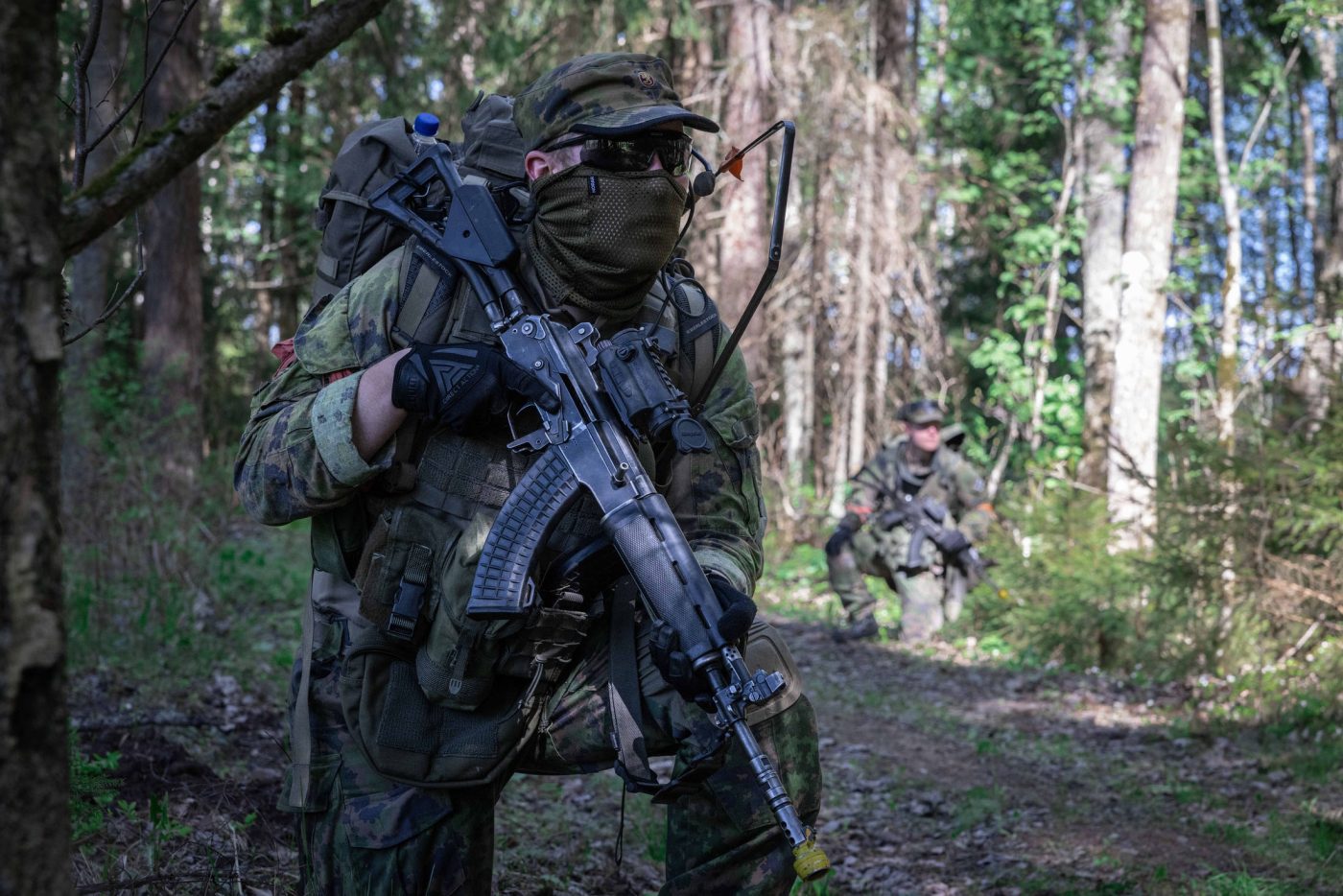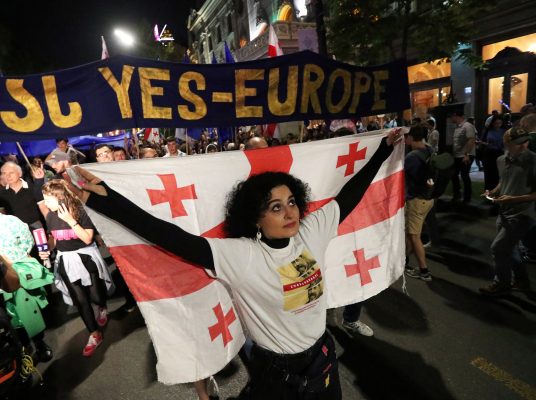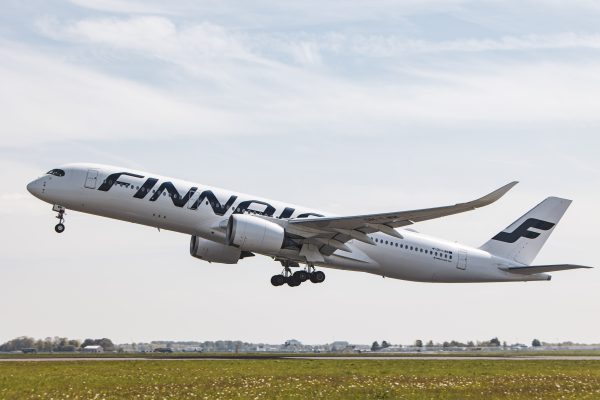Lance Landrum
Welcome to the Center for European Policy Analysis’s “State of the Alliance”. It’s an ongoing series to bring together thought leaders from Europe and North America to discuss and deliberate, the most pressing challenges to the NATO alliance, the NATO alliance members and its partners. And today I’m very honored to be able to welcome to our studios, the Republic of Estonia’s Minister of Defense, Mr. Hanno Pevkur. Mr. Minister, thank you for your time today and joining us in the studio.
Hanno Pevkur
Thank you for inviting and it’s good to be here.
Lance Landrum
Let’s jump right into it. The world and all the nations have been watching very closely, the conflict in Ukraine that stems from Russia’s illegal and unjustified full scale invasion for over two years now. Can you share with us some of Estonia’s viewpoints on your lessons from that conflict? And how it applies to your defense planning and possible changes to some of your defense and security investments?
Hanno Pevkur
Yeah, well, obviously, we are taking these lessons, you know, from day to day, and then we’re trying to bring them at home as as much as we can. And I have to say that even during these last two years, the battlefield has changed dramatically. So we started with the like, conventional war, what we knew from the First World War, the Second World War, you know, the Russians just bombing everything, and then trying to conquer the territories, and to keep the territories. Now, we see that drones are flying. Now we see that, you know, the AI is coming. And unfortunately, the Russians are using also chemical weapon, you know that, that they are going to be more brutal and brutal all the time. So bringing also very old bombs back, having some wings attached to them. And, and it’s, you know, it brings you to the mind to the understanding that you have to be ready to change throughout the war. And then our lessons learned, quite simple that you know, that we have to equip ourselves more, we have to invest more into defense. And what we have done is that is that, you know, these new capabilities we have already acquired or have to be manned. And then you have to be very flexible. In some terms, for instance, with the drones, there is no point to have big stockpiles, because the drone technology is developing so rapidly. And you know, there are so many things, probably we cannot go through in these couple of minutes. But but the main lessons is that you know, that deterrence still needs to be there, bring more money into defense, and do it very quickly. So these, these are very important things to remember.
Lance Landrum
I think the what we’ve seen with the technology and innovation that has appeared on the battlefield in various forms, and the creativity of the Ukrainian forces, to be able to put those to good effect, has a lot of opportunity for the NATO alliance and members to learn from the Ukrainians. These apply, I think a bit to some of our defense investments and thinking within the NATO alliance. How do you feel that the NATO alliance is prepared to adapt to this rapid changing technology and rapid changing innovation? Because there is an element of this that is very modern, that breaks the normal barriers of our past paradigms of capability, development requirements, and implementation? So what’s your sense on NATO’s ability to adapt with this?
Hanno Pevkur
I have a very strong understanding that, you know, NATO is as strong as every member. So this is why I’m saying all the time that you know, we need to invest more because you know, already 10 years ago in Wales, all the allies agreed that we will have at least or we will have 2%. Now, in Vilnius, we said that 2% is an absolute minimum, but still, last year, we had only 11 countries. This year, maybe we have 18, 19 countries who have 2%, we were adequate and given for more, because Estonia has this year maybe 3.4. So we will keep the 3% level or above 3% level for upcoming years. So this is like the first precondition to everything because when you do not have the money, you cannot also cope with the new technologies you cannot bring them in and the challenge in general for the military is that you are buying the equipment or the weapon systems for 20, 30, 40 years. So when you are building a ship, you know it will be in the service for 40 years. When you’re buying artillery system it will be in the service for 20, 30 years, and then you have like drones. You have electronic warfare, you have all these new capabilities. And, and you know, this is why what we try to do in Estonia is that, you know, when by average in NATO 27, 28 cents from each dollar goes to development and new new capabilities, then we are putting 55. So we are just, you know, trying to build up the army so that we are ready for for any threat. Is NATO ready as an alliance? Yes, we are. Of course we are. The question is that, you know, even looking at the new regional plans that we have in NATO, which were approved in Vilnius, these plans are really good. But are they executable? Yes, they are. Are they 100% executable? Not yet. So this is why, you know, we are heading to watch the summit also with some ideas, but I believe we have some times also to talk about that. But nevertheless, you know, all these new technologies are so important. And then you have to be flexible. And now, I believe, for the next five to 10 years in every country of NATO, hoping that there will be no war with Russia. We actually have to, you know, bring this new knowledge and new understanding into our army’s what we see in Ukraine.
Lance Landrum
Yes, well, speaking of NATO adaptation and readiness to fulfill the requirements of the regional plans, there are some new NATO members, and they are from your region. So they’re close. Not only neighbours of you, but I know that you have a lot of shared common history, and Finland, of course, and Sweden, were strong partners with the NATO alliance, and now they’re full members. How do you see their accession into the NATO alliance to bring the capability in? How do they how do they fit in your view, from the Estonian Ministry of Defense?
Hanno Pevkur
Oh, they fit perfectly in a way to put it in one word. So I would, I would say that but but at the end of the day, of course, you know, for us, it is very important that we have now better control over the Baltic Sea. Because you know, Estonia, Latvia, Lithuania, we do not have the strategic depth, because when you take us to the battlefield in Ukraine at the moment, then this is around the same size as Baltic countries altogether. Because when you’re just taking the map, you see that it’s a narrow corridor, which is the battlefield at the moment in Ukraine. In reality, it’s like from Washington to Miami, and it’s like around 700 or 800 miles. And the territory is also the same size as Baltic countries. So this is why we clearly understand that no, our strategic depth is also linked to Finland, Sweden, we need to have the corridors open for the supply lines. And of course, we need to control the Baltic Sea. So now when you look at the capabilities, what Sweden has very strong Navy, really strong Navy, good Air Force, stronger army, Finland, extremely strong army, and, and also Air Force, they are buying now, 64, I believe 64 F-35s. So we will see a very strong northeast corner of NATO. And this is very important for us, you know, especially you know, now we can also share some more information and also fight more like in effective way against the hybrid threats, because you know, we have a lot of connections between Estonia, Finland, Sweden, undersea cables, electric grade gas pipeline, so we have to protect and defend also thIS. So it’s from our point of view, and I believe for all the alliances great success story that we were able to have Finland already for more than one year, and now Sweden for for a couple of weeks. So it’s good.
Lance Landrum
Yes, it’s certainly an example of Mr. Putin’s miscalculation, on his aggression into Ukraine, there the accsession of those two new members. The other thing that strikes me with Finland and Sweden, and I think it applies a lot to Estonia and your Baltic state partners, is the total defense concept, right, this reserve forces that you have this mix with the citizens to build the resilience of your societies, as well. And I think that’s an interesting aspect that the the alliance has many lessons to learn from not only Estonia, Lithuania and Latvia, but also Finland in Sweden. Are you trying to share some of the some of those concepts and some of those processes within NATO alliance in the member states?
Hanno Pevkur
Well, I believe that there are already some practical steps where we see that you know, Latvia is introducing the conscription service. Germany’s thinking again about the conscription service, because you know, Estonia and Finland are very similar in that sense and our army base is reservists or reserve army. So, and this is why when when I take our wartime structure, then our wartime structure is close to 44,000 men with which comparable, when we bring it to the US terms, it could be around 13, 14 million of, of army. So, and the, you know, looking at this, the same in Finland, so, they have close to 200,000 in in their like wartime structure, so, then multiply that to 300, and then you will understand what that means. So, so, yes, we have this total concept, and we have also a very strong, voluntary part in our wartime structure, because our voluntary Defense League, which is close to National Guard here in states means that, you know, we have there 30,000 members 10,000 combatats around 4,000 youth organization for boys and 4,000 for girls, and 4,000 women, so, and then additionally to that, some some other people who are already a bit older, but they say you can help us with the formation and all that. So, that means that you know that we are ready to defend our country. And then when I’m just thinking in a way that how we are prepared today, comparing to that, what we had 100 years ago when we started a bit more. So, in 1918, when we when we started our independence war against Russia, then we had, like 2,000 men and 1,500 rifles. So today we have, you know, and we won that war against Russia. So this is also the message that you know, that when Russia comes to a small country and wants to take away your freedom, then you are able to fight back and win this independence war, if necessary. And of course, if you have allies, so we had UK and then Finland and others, to come to help us. So you can actually achieve the victory also against the big, brutal enemy.
Lance Landrum
Yeah, and I think we’re seeing another example of that in Ukraine, right, the resilience of the society and the, the courage and the bravery that they’re showing, and I think that stance is when people’s freedoms and liberties are threatened and being taken away that they can really rise up in solidarity and fight. Mr. Minister, we can’t let you go today without discussing a very important event that’s happening in Washington this summer. Of course, it’s the NATO Summit here in Washington, DC, they’ll be celebrating the 75th anniversary, of course, but there’s a lot more substance to that event. And so we would be curious to hear your views on on what a successful summit looks like, right? What are the outcomes or decisions that need to be taken, that are most important for the alliance going forward?
Hanno Pevkur
Well, I believe that we have like two lines. One is everything linked to NATO, and our own actions, and the other is Ukraine. So regarding the the NATO activities, then first we’ve had like two very good summit’s in Madrid, and in Vilnius, now we’re coming to Washington, and definitely what we need to do first to have an insight or look into that what we have achieved since Vilnius, so this is the regional plans and executability of the regional plans. So in that sense, as I said already, that we probably will see that there’s still some gaps, which means that we have offered for that gap, one specific initiative, which is called Defense Capability Initiative, and which I hope that it will be also in the final communique as we are working, and we were like working on the wording at the moment, together with the allies. But the point of that Defense Capability Initiative is that, you know, we still have forces to allocate to the original plans, all of us. And now we have to see that how we can allocate more forces into the SACEUR portfolio, And addition to that, also to ramp up the production and you know, to see that yes, we are ready to defend our countries if necessary. Second part definitely is regarding Ukraine, and Ukraine, it’s not easy to definitely to see to find the right wording and probably there will be some kind of bridge between Vilnius and Washington. But from our point of view, we have been very clear that you know that the only security guarantee for for Ukraine is the membership and and this is why you know that the, you know, we really hope that we will see some very strong wording. We all understand that it will not happen in Washington to get the membership for Ukraine but on the other hand, we also, at least in our region, we all understand that when there is a need for Estonia or Latvia or Lithuania, or for Poland, or for Finland, to defend ourselves, then the Ukrainians will be the first one who are coming to help us as we went as first one to help them. So in that sense, you know, we do not have any doubts that Ukraine has to be and then also on practical level, I believe that Ukraine, after that war, will be one of the strongest armies because, you know, they’ve had the experience. They’ve have, they used all the weapon systems, we have in NATO. So I’ve said that they are like world champions of interoperability, using either 140 or 150 different weapon systems, and they are picking, you know, the best ones which are working, which are not. So this is why, you know, Ukraine Army definitely will come out very strong from from this war. So, you know, when we’re keeping these two lines, let’s see, you know, and of course, we will have a new Sec. Gen. So and 75 years, NATO has been able to keep the peace in the Euro Atlantic zone. So my wish is that it will continue for the next 75 years or 750 years, with that constellation what we have and maybe, you know, new members coming. So this is very important that you know, that we keep the unity here because you know, all together we are stronger.
Lance Landrum
Thank you, Mr. Minister. This has been CEPA’s “State of the Alliance” with the Republic of Estonia’s Minister of Defense. Mr. Hanno Pevkur. Thank you for your time today. Thank you. Please tune in to cepa.org for further analysis and discussions on the most pressing transatlantic security and defense issues.




